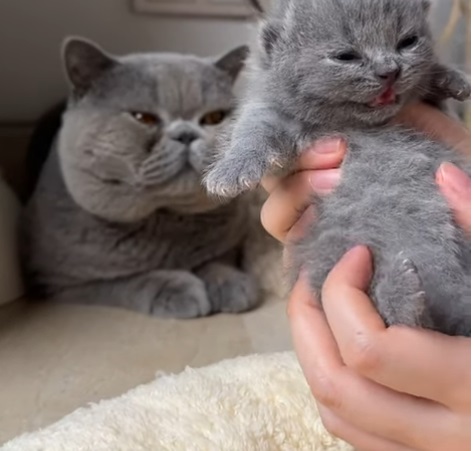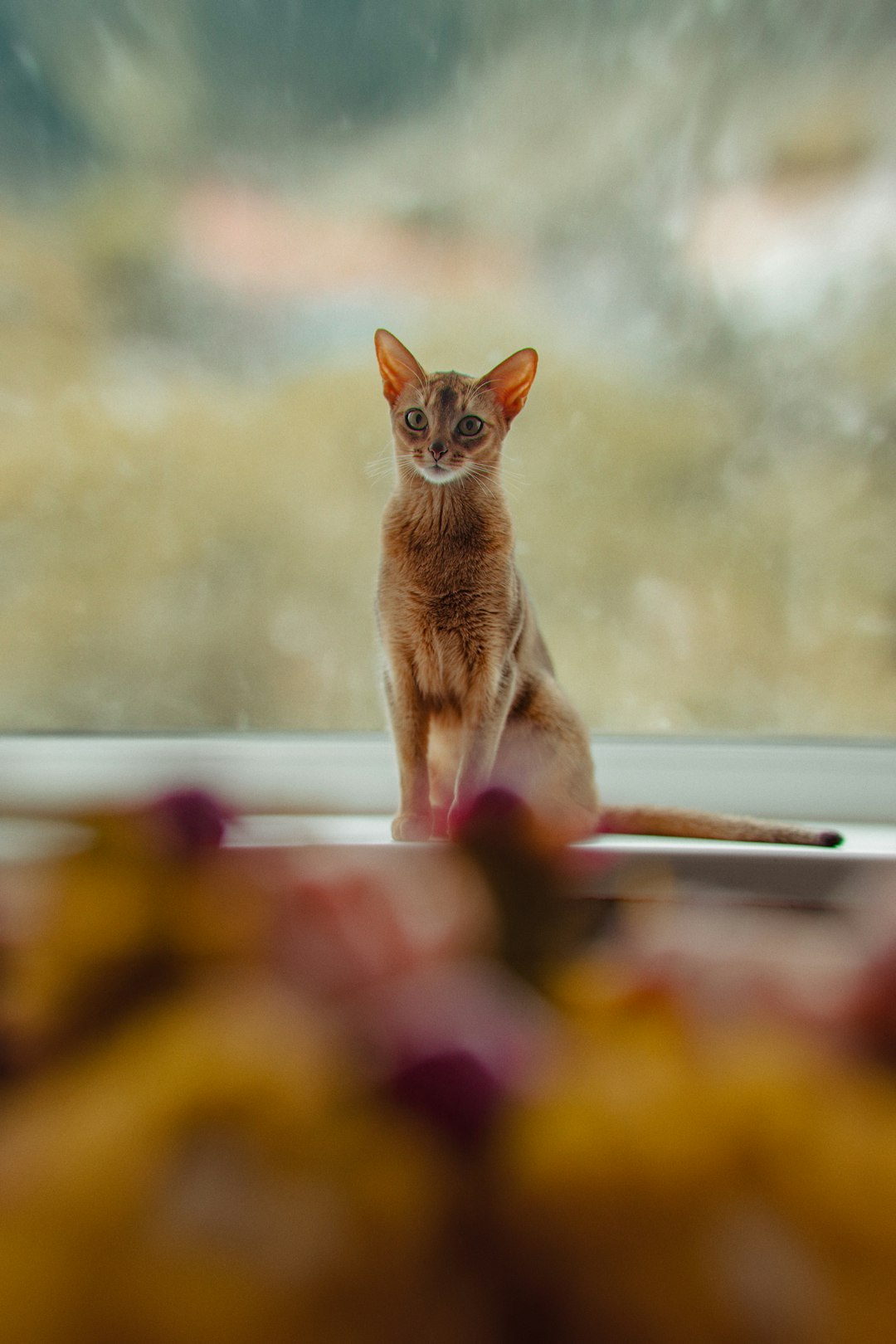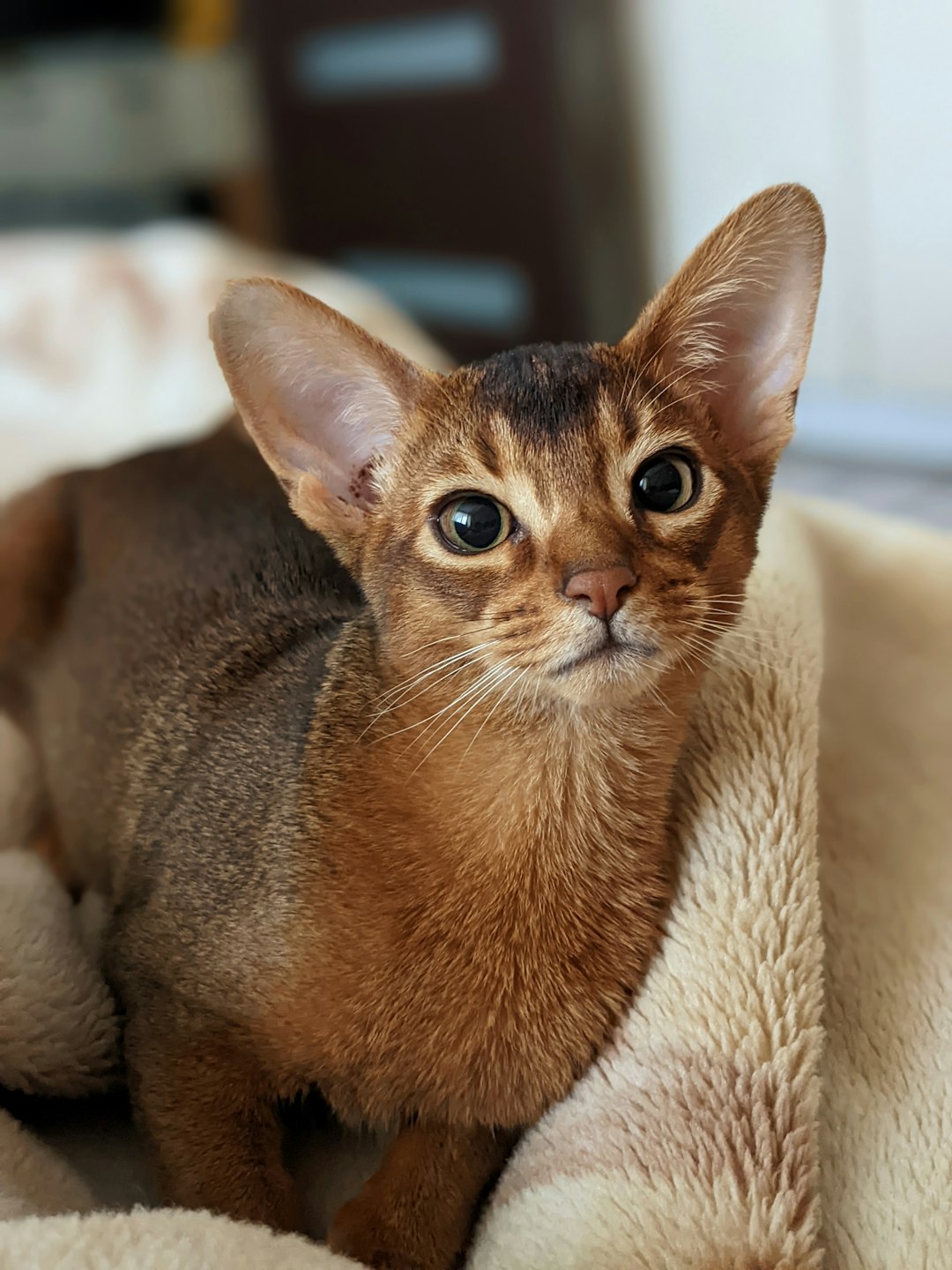Are you considering adding a British Shorthair to your family in 2024? This beloved breed, known for its charming demeanor and striking appearance, has a rich history that captivates cat enthusiasts worldwide. In this comprehensive guide, we will explore essential aspects of the British Shorthair, including its unique British Shorthair characteristics and temperament, which make them such delightful companions. Furthermore, we’ll delve into distinctive physical features, helpful British Shorthair grooming suggestions, effective training strategies, and crucial health considerations. Whether you’re a potential owner or simply curious about this iconic breed, prepare to uncover everything you need to know about the British Shorthair and how to ensure a happy life for you and your future feline friend.
The Fascinating History of the British Shorthair
The British Shorthair is a breed steeped in rich history that dates back to the Roman conquest of Britain. As cats accompanied these soldiers, they were cherished for their exceptional grooming capabilities and ability to control vermin. The robust and sturdy physique of the British Shorthair can be traced back to these early beginnings; their characteristics, such as dense fur and round faces, were highly valued for survival in various climates.
In the late 19th century, as cat shows gained popularity, the British Shorthair began to capture the hearts of cat lovers. This period marked a pivotal moment in their history, as breeders focused on enhancing their unique traits. The breed was showcased prominently at the first organized cat show in 1871, where they stood out for their calm demeanor and attractive appearances.
The British Shorthair characteristics such as their plush coat and stocky body worked wonders to solidify their status among show cats. However, it wasn’t until after World War II that the breed faced challenges from crossbreeding, leading to variations in type and appearance. Thankfully, dedicated breeders worked diligently to restore the breed to its original glory by adhering to strict standards.
Today, the British Shorthair is renowned not only for its stunning looks but also for its gentle and adaptable nature. Understanding this fascinating history provides deep insights into why these cats have become beloved companions across the world. They are more than just pets; they are living links to a past filled with valor and charm, making their journey nothing short of captivating.
Understanding British Shorthair Characteristics
When exploring the british shorthair characteristics, one must appreciate their unique blend of physical traits and personality aspects that make them truly captivating companions. These cats are known for their robust and muscular build, which contributes to their sturdy stature. With a broad head, large round eyes, and dense coat, they exude a sense of strength and confidence that’s hard to overlook.
In terms of demeanor, the british shorthair temperament is typically described as calm, easygoing, and affectionate. They are not overly demanding of attention but enjoy spending time with their humans, whether that means cuddling on the couch or sitting nearby while you go about your day. This balance allows them to be a wonderful pet for both busy households and those who enjoy more quiet times.
Moreover, british shorthair grooming is relatively low-maintenance, thanks to their dense yet short coat. A regular brush can help to reduce shedding and keep their fur looking its best. Their grooming needs are minor compared to some breeds, making them an ideal choice for potential cat owners who may not have extensive experience in pet care.
In summary, understanding these british shorthair characteristics not only assists in appreciating their beauty but also ensures that owners can provide an environment where these lovable cats thrive. With their delightful temperament and manageable grooming needs, british shorthairs can be the perfect addition to many households seeking a furry friend in 2024.
Distinctive Features of the British Shorthair
The British Shorthair cat is renowned not just for its affectionate nature but also for its striking physical attributes. With a robust and muscular build, its british shorthair characteristics are easily recognizable. These cats boast a round face with chubby cheeks, giving them an adorable, teddy bear-like appearance. Their large, round eyes, often copper or blue in color, further contribute to their unique charm.
“The British Shorthair’s thick, plush coat and sturdy frame make it one of the most beloved breeds worldwide.” This breed has a dense, water-resistant coat that comes in various colors and patterns, enhancing its aesthetic appeal. The texture of the coat is particularly soft, making grooming an enjoyable experience for both the cat and the owner.
In addition to the attractive physical traits, the british shorthair temperament is equally distinctive. These cats are known for their calm, easygoing demeanor, making them wonderful companions for families and individuals alike. They generally exhibit a playful yet independent nature, striking a perfect balance that many cat lovers appreciate.
Furthermore, their strong bones and chubby bodies give them a stocky appearance, making them seem more substantial than their feline counterparts. This sturdy build also contributes to their playful antics, as they are quite agile and enjoy engaging in playtime. Overall, the unique combination of appearance and personality makes the British Shorthair a favorite among cat enthusiasts.
Exploring British Shorthair Temperament
When considering pet ownership, understanding the British Shorthair temperament is essential. Known for their laid-back and easygoing nature, these cats often exhibit a unique blend of independence and affection. They tend to be friendly yet reserved, making them an ideal companion for various households.
One significant trait of this breed is their calm demeanor. Unlike more hyperactive felines, British Shorthairs enjoy lounging around, often finding cozy spots to nap throughout the day. This characteristic allows them to fit well into a variety of living environments, from spacious homes to smaller apartments. Additionally, their moderate energy levels mean they don’t require constant playtime, which can be a relief for busy owners.
Moreover, British Shorthair characteristics also include a social nature. While they may not be the life of the party, these cats appreciate companionship and enjoy the company of their human families. They can also get along well with other pets, making them adaptable to multi-pet households.
Although generally affectionate, they value their personal space. Thus, respecting their boundaries is crucial in fostering a healthy relationship. It’s important to note that socialization from a young age can enhance their overall temperament. Regular interactions with various people and environments will help cultivate a confident and well-adjusted feline.
In summary, the British Shorthair temperament combines independence with affection, making them unique companions. Whether you’re looking for a cuddle buddy or a low-maintenance pet, this breed perfectly balances heartiness and charm.
The British Shorthair in Popular Culture
The British Shorthair has made a significant mark in popular culture, enchanting audiences across various mediums. Known for their sturdy physique and charming demeanor, these cats have secured their spot in the hearts of many. Their distinctive look, characterized by a round face and dense coat, has inspired various artistic representations and character designs in movies, novels, and animations.
One of the most iconic appearances of the British Shorthair is in the beloved children’s book series, “Alice’s Adventures in Wonderland,” where the Cheshire Cat showcases the breed’s charming and enigmatic qualities. This character not only embodies the British Shorthair temperament of independence and curiosity but also highlights the breed’s playful side.
In recent years, the British Shorthair has gained further popularity through social media platforms and viral videos. Cat enthusiasts often share clips showcasing the breed’s delightful antics and unique personality traits. As pet owners embrace the social media culture, the breed continues to thrive in the spotlight, leading to an increase in demand for adoption and ownership.
Moreover, the British Shorthair characteristics, such as their docile nature and adaptability, make them perfect companions for various lifestyles, ensuring they remain a favorite among pet owners and influencers alike. Their enduring presence in popular culture not only reflects their fascinating beauty but also reinforces their reputation as loving and reliable companions in households around the world.
In essence, the British Shorthair is not just a pet; they are a cultural icon that brings joy and inspiration to many!
Essential Grooming Tips for British Shorthairs
“Taking care of a British Shorthair is not just about aesthetics, it’s about their health and happiness.” Grooming these charming felines is essential for their well-being and to showcase their stunning looks. To maintain the beautiful coat associated with the breed, regular grooming is crucial. Here are some bold tips for effective grooming.
Firstly, British Shorthair grooming should include brushing at least once a week. This practice helps remove loose hair and reduces the risk of hairballs, which can be uncomfortable for your cat. Use a soft-bristle brush or a grooming glove for a gentle experience that they will likely enjoy.
In addition to brushing, it’s important to pay attention to their ears and teeth. Check their ears regularly for dirt and wax buildup, wiping them gently with a damp cloth if necessary. For dental health, consider incorporating tooth brushing into your routine, as this will help prevent plaque buildup and keep their mouth fresh.
When it comes to bath time, it’s best to avoid frequent washing, as British Shorthairs tend to groom themselves well. However, in cases of extreme dirt or during shedding season, a bath may be beneficial. Use a mild cat shampoo and ensure that you dry your feline companion thoroughly afterward.
Finally, understand the British Shorthair temperament; these cats can be quite laid-back. Make grooming sessions a bonding time filled with love and gentle strokes. This approach not only promotes positive associations with grooming but also strengthens your relationship.
In summary, keeping your British Shorthair well-groomed enhances their aesthetic appeal and overall health, ensuring a happy and healthy life together.
Health Considerations for British Shorthairs
When it comes to ensuring the well-being of British Shorthairs, several health considerations must be prioritized. British Shorthair characteristics often include a sturdy body and distinctive round face, but these features can be accompanied by certain health challenges. Regular veterinary check-ups are essential to catch potential issues early on.
One prevalent concern is hypertrophic cardiomyopathy (HCM), a condition that affects the heart’s function. This breed is also predisposed to obesity due to their love for food and relatively sedentary lifestyle. To combat this, it’s crucial to provide a balanced diet and encourage daily playtime, ensuring your feline friend remains active and healthy.
Moreover, the unique physical structure of British Shorthairs can impact their respiratory health. While their plush coats are a delight during British Shorthair grooming, they can also require careful attention. Regular brushing not only keeps their fur in top condition but reduces the risk of mats that could lead to skin issues.
In addition to specific conditions, routine dental care should not be overlooked. British Shorthairs can be prone to dental diseases, so incorporating teeth cleaning into their grooming practices is necessary.
Ultimately, staying informed about the health risks for British Shorthairs and addressing them proactively can improve their quality of life significantly. This ensures your British Shorthair, with its charming British Shorthair temperament, lives a long, happy, and healthy life alongside you.
Training and Socialization for British Shorthairs
Training and socialization are crucial aspects to ensure a well-adjusted and happy life for British Shorthairs. Understanding their nature and characteristics can make this process much smoother. With their British Shorthair characteristics being a blend of intelligence and independence, many owners find that these felines respond well to positive reinforcement techniques.
Start training early; kittens are more receptive to learning new commands or tricks. Use simple commands and pair them with treats or praises to encourage good behavior. For instance, teaching them to come when called can create a strong bond and improve their responsiveness.
Socialization is equally important for British Shorthairs since it helps them develop into confident and well-mannered companions. Expose them to different environments, people, and other pets from a young age. Gradually increasing their exposure will help reduce any anxiety or fear they might feel in new situations, which is essential due to their sometimes reserved British Shorthair temperament.
Furthermore, maintaining a consistent socialization routine fosters trust and prevents behavioral issues down the line. Regular play sessions can also enhance their social skills while stimulating their minds. Interactive toys or scheduled playtime can keep these cats engaged and reduce any potential negative behavior rooted in boredom.
In summary, early and consistent training coupled with proper socialization can significantly enhance a British Shorthair’s quality of life. With patience and commitment, you can nurture a confident and well-behaved feline companion.
Choosing the Right British Shorthair for Your Home
When it comes to selecting the ideal British Shorthair for your living space, several important factors should guide your decision-making process. First and foremost, consider the British Shorthair characteristics. These cats are known for their sturdy builds, dense coats, and round faces. Furthermore, their calm demeanor makes them perfectly suited for various environments, from busy households to more tranquil settings.
“Each British Shorthair has a unique blend of personality traits, which can make your choice even more fulfilling.” In general, these cats are friendly yet independent, exhibiting a balanced temperament that makes them adaptable companions. Pay attention to the temperamental variety within this breed; some may be more playful, while others prefer lounging around undisturbed. Understanding the individual British Shorthair temperament will help you select a cat that fits your lifestyle.
In addition, consider the age of the cat. Kittens tend to have lots of energy and require more socialization and training. On the other hand, adult British Shorthairs often come with established personalities and are generally less demanding. Think about your living situation as well; those with larger homes may opt for more active cats, while apartment dwellers might look for quieter companions.
Moreover, if you have children or other pets in the home, ensure that the British Shorthair’s temperament aligns with a more family-friendly environment. Ultimately, choosing the right cat is about compatibility, ensuring that your new furry friend is a delightful addition to your household.
Preparing for Life with a British Shorthair Cat
Bringing a British Shorthair into your home is an exciting venture, and a little preparation can go a long way in ensuring a smooth transition for both you and your new furry friend. First and foremost, creating a safe and welcoming environment is essential. Remove any hazards, such as toxic plants or small objects that could be ingested, to foster a secure space for your British Shorthair to explore.
Next, consider investing in high-quality supplies. This includes a sturdy litter box, comfortable bedding, and, importantly, toys that cater to their playful nature. British Shorthairs enjoy interactive play, so provide a mix of engaging toys to keep them stimulated. Additionally, when it comes to British Shorthair grooming, establish a routine early on. Their dense coats benefit from regular brushing, which helps reduce shedding and keeps their fur in pristine condition.
Furthermore, it’s crucial to understand their temperament—these cats are known for their calmness and affectionate nature. Creating a daily routine can help provide a sense of stability, which is particularly beneficial for their emotional well-being. Incorporate playtime and cuddles into your day to foster a strong bond.
Lastly, prepare for regular veterinary check-ups to maintain their health. Understanding British Shorthair characteristics can help you anticipate any breed-specific needs. With thoughtful preparation, you can create a loving and nurturing environment that will allow your British Shorthair to thrive in a harmonious home.



